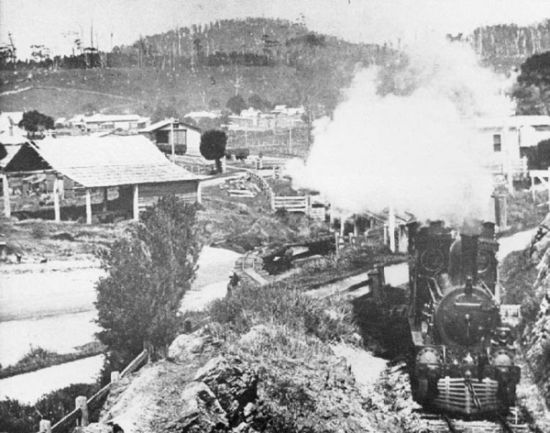 |
 |
|
Iron Mining
The development of the west Tamar began in the 1820s with a convict outstation at the head of Middle Arm, to exploit nearby limestone deposits. In 1866, a geological report by Charles Gould indicated significant iron deposits in the district. In 1872, the Tasmanian Charcoal Iron Company began mining at Mount Vulcan, and the Ilfracombe Iron Company at Burkes Hill. Two years later, the Tamar Hematite Company's mine opened at Pease Creek. These enterprises built extensive plant, tramway systems, port facilities and separate communities. However, by the end of 1875, both Ilfracombe and Tamar had closed. The Tasmanian Charcoal Iron Company continued to expand, completing a new rail link and smelter during 1876. Despite all the promise, the operation closed down by the end of 1877. Tasmania's nineteenth-century iron industry had lasted only five years. Later, there was spasmodic iron mining at Blythe River, near Penguin, from 1900 to 1941, with limited success. Tasmania's most successful iron mine (Savage River) was established during the 1960s and continues today. Further reading: B Smith, Town with a history, Beaconsfield, 1978. Greg Dickens |
Copyright 2006, Centre for Tasmanian Historical Studies |
